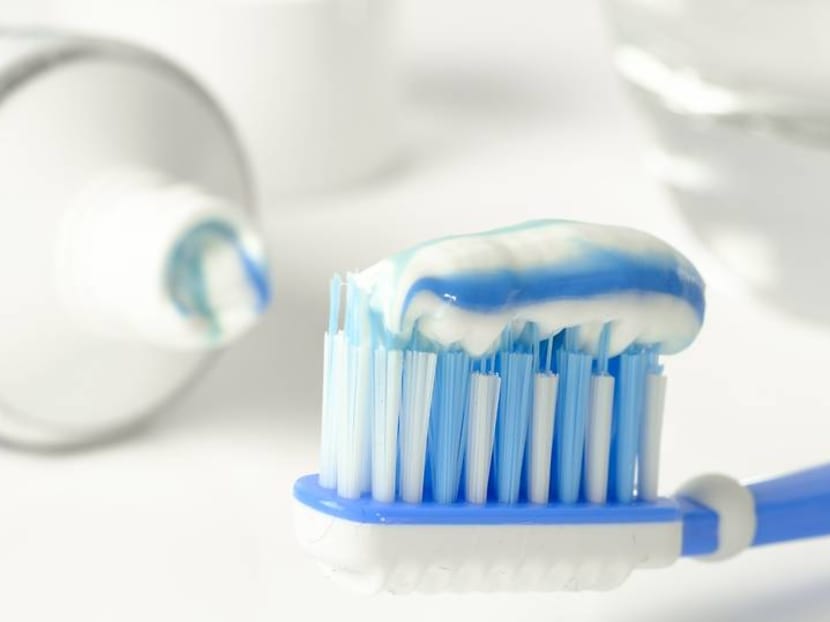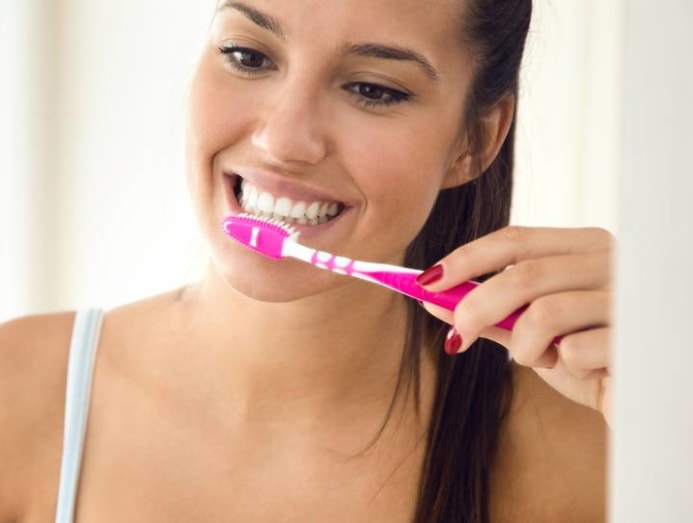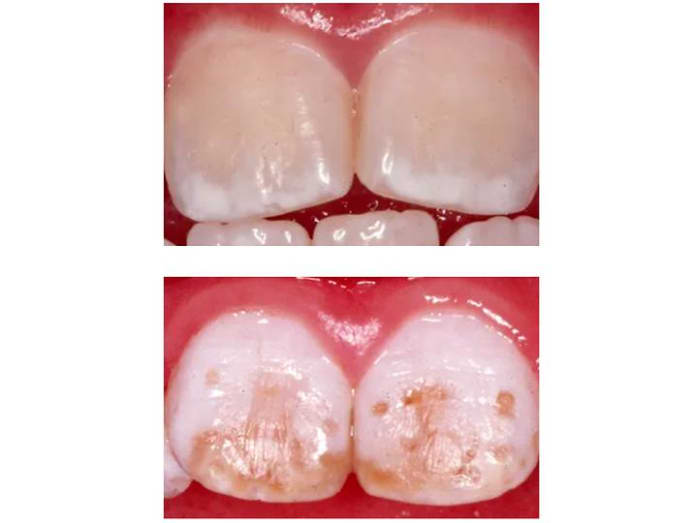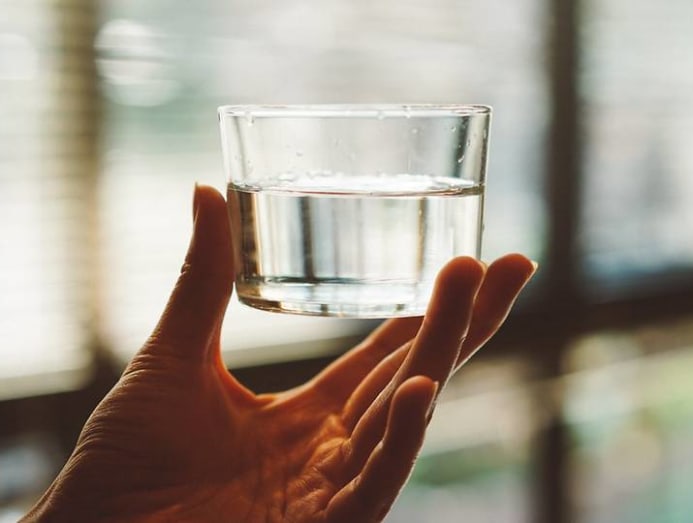Are we brushing teeth the wrong way? Too much toothpaste, rinsing with water
You might have come across a Malaysian dentist's TikTok videos on dental hygiene tips. We asked health experts to elaborate on what we might be doing wrong when it comes to toothbrushing.

File photo of a toothbrush. (Photo: Pixabay/Bruno)
If TikTok has taught me anything, it’s that the bathroom is a highly preferred location to stage viral videos. And it’s not just those #fliptheswitch ones (for non-Gen Z readers, it’s a challenge involving two people switching outfits to Drake's Nonstop).
One bathroom series that’s been going around is that of Dr Gao Jye Teh, a Malaysian dentist who’s been amusingly giving us the viral lowdown on, well, brushing teeth. He’s claimed you don’t need to rinse your mouth and you’ve actually been using way too much toothpaste on your pearly whites.
So, in the spirit of dental hygiene fact-checking, I went and asked other doctors if there was any truth to all these claims.
WAIT, DON’T GARGLE AFTER BRUSHING?
In his video, Dr Gao said that the fluoride in the toothpaste takes time to work, and rinsing your mouth washes out the fluoride before its tooth-protecting benefits kick in.
You definitely want your toothbrushing efforts to stick but not gargle with water at all after brushing?
"This is true as rinsing with a large volume of water after toothbrushing dilutes the concentration of fluoride at the teeth's surfaces and reduces its effectiveness in preventing tooth decay," said Dr Wong Kuan Yee, the registrar at Khoo Teck Puat Hospital's Dental Surgery Department.
If you're not used to the foamy feel left in the mouth, Dr Wong suggested rinsing with a smaller volume of water instead. However, this is not recommended for young children to prevent them from ingesting fluoride (more of that in a while).
Dr Bien Lai, the head and consultant with the paediatric unit at National Dental Centre Singapore’s (NCDS) Department of Restorative Dentistry, has another take: “Having the correct amount of toothpaste in the mouth for two minutes would have helped".

That’s provided you’re brushing with a 1,000 parts per million (ppm) fluoridated toothpaste twice daily, she qualified. The fluoride concentration is usually stated on the packaging.
"Most toothpaste sold locally contain 1,000ppm to 1,500ppm (0.10 per cent to 0.15 per cent) of fluoride, which is within the safety limit of 0.15 per cent set by Singapore's Health Sciences Authority," said Dr Wong.
WHEN TOO MUCH FLUORIDE ISN'T GOOD
Speaking of toothpaste quantity, TikToker Dr Gao was also right about us using too much toothpaste.
What you need is just a rice grain-sized amount of 1,000ppm fluoridated toothpaste for children under three years old, affirmed Dr Wong. A smear will do as children of these ages may have difficulty spitting out the toothpaste.
For older children and adults, you only require a pea-sized amount of 1,000ppm fluoridated toothpaste, said Dr Lai.
"Using an entire strip of toothpaste – similar to what we see in commercials – is unnecessary, and does not add any benefits to the dental health," said Dr Yang Jingrong, a consultant with the periodontic unit at NDCS's Department of Restorative Dentistry.
But why limit the toothpaste quantity used?
Take a look at your teeth in the mirror. If you spot white flecks or frosty edges on your tooth enamel, you may have fluorosis – a condition indicative of ingesting excessive amounts of fluoride when your teeth were still developing, said Dr Lai.
Dr Wong explained that fluoride present in the body is used to create enamel during your teeth's formation.
However, when there is an excessive amount of fluoride, say from ingesting toothpaste during brushing, it results in dental fluorosis. "This would appear as opaque or brown discolouration and/or pitting of the enamel," she said.

Fluorosis typically starts during childhood. “The development of the crown (top part of the tooth) completes at about three years old for upper permanent front teeth, and about nine years old for the back teeth,” said Dr Lai.
Other than ingesting toothpaste, drinking water with high levels of fluoride can also play a part.

These days though, fluoridated water from our taps is less of a cause for fluorosis "because the national water fluoridation has changed over the years", said Dr Lai, though “there is no recent epidemiology study on fluorosis”.
The good news is, there isn’t a risk of fluorosis developing or worsening in adulthood. “The tooth development would have been completed way before age 21,” said Dr Lai.
CAN YOU COMPLETELY OMIT FLUORIDE?
You do need fluoride. "In adults, fluoride present in toothpaste acts locally on the surface of the fully developed teeth to prevent decay," said Dr Wong.
"Decay occurs when bacteria present in plaque produce acids that demineralises tooth surfaces, leading to the formation of cavities if left untreated."
Even the use of mouth rinses is not sufficient on its own, said Dr Yang. "We do not routinely advise the use of mouth rinses, except in cases where patients have difficulties in brushing their teeth."
These can range from oral surgery to impaired dexterity (for instance, stroke or Parkinson’s patients) and cognitive impairment.
Even so, such patients are advised to use the mouth rinses "as a supplementation to brushing, but not a replacement", said Dr Yang.
Maybe TikTok isn't just for Gen Z and dance trends.





